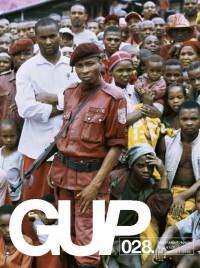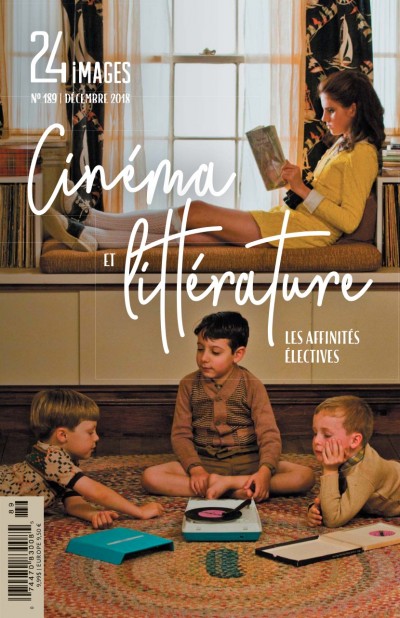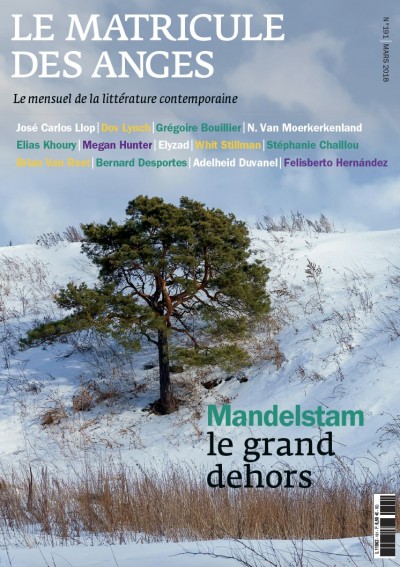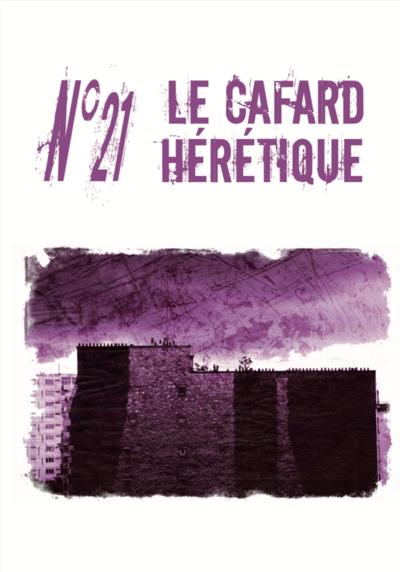
Richard Mosse
- magazine : GUP
- numero : 28 - 2010
- date : 01 mars 2010
- catégorie : Culture & arts
Sommaire
-
A million shillings: Escape from Somalia
The Horn of Africa is an assembly point for thousands of men, women and children fleeing from war, abuse and hunger. This is the place from where they hope to find a better life.
-
A Pictorial Thriller
If you find yourself in a conflict there are two things you can do. You can run away, or, the more classic
option, you can poke the other person in the eye. Option two is explained in one of my favourite books
of all time: The Pictorial Guide to the Martial Arts. It is readable as the guide that it calls itself (the author
tells us we can use this particular technique in the event of a psychotic hitchhiker, although why this killer
got to sit in the back is not explained), but to me it is way more fun is to look at the book as a pictorial
novel, a photo thriller if you will. -
Raskols
Raskols (Tok Pisin for criminals) is a series of portraits documenting the individuals behind the facelessness of gang culture in Papua New Guinea's capital Port Moresby.
Stephen Dupont’s photographs depict ‘Kips Kaboni’ or ‘Red Devils’ and were taken during several visits to a safe house in 2004. -
Places to die for
Steve Davey is a successful travel photographer and author of the bestselling Unforgettable Places to See Before You Die. I haven't read his book, but assume it does not include images of what are commonly referred to as 'conflict zones'.
-
A conversation with Richard Mosse
On the following pages you will see Richard Mosse's Infra, a remarkable work in progress of what we casually tend to refer to as the conflict in Congo. Why go there? Why use colour infrared film? Jörg Colberg, founder and editor of Conscientious, a website dedicated to contemporary fine-art photography, asked him.
-
On Familiar Grounds: Larry Clark and his Tulsa (1971)
Larry Clark (1943) was born in Tulsa, Oklahoma. When he was 16 he started shooting amphetamines. With his friends, every day, for three years. He then left town but kept coming back through the years.
-
Self portraits
In this body of work, Jen Davis (1978, USA) deals with the conflict between self-perception and the
way one is perceived by others. Through the act of photographing a mix of personal experiences and
fantasies about intimacy, love and desire, she invites the viewer into her private world. -
Daria Tuminas
Daria Tuminas (1984, Russia) wrote her MA thesis at the St. Petersburg State University on amateur photography and is currently enrolled on the MA
in Film and Photographic Studies at Leiden University. Initially a freelance journalist specialising in photography, and the coordinator and curator of an International Summer School in Photography focusing on the new language of documentary and journalistic photography, Tuminas can now also be considered a significant photographer in her own right. -
Military camp
Arpad Kurucz (1979, Hungary) encountered an interesting point of discord in Hungary, where military ‘survival’ or army camps have become very trendy. For some, military style is just fashion posturing, for others, it is a part of mental and physical training.
-
Kashmir
Emerging photographer Andy Spyra (1984, Germany) has for two years been focusing on a long-term project in the Kashmir Valley, the location of the longest unresolved conflict in the history of the United Nations. Today, over 700,000 Indian soldiers and paramilitary forces are stationed in the region. This makes Kashmir the most highly militarised zone in the world.
-
Antoine D’Agata in Brazil and Cambodgia
Antoine D’Agata (France, 1961) started his career in the 1980s in New York, at the International Center of Photography. Alongside Nan Goldin and Larry Clark, fellow travellers on the grim and shady road of life, he often ends up in dangerous, drug-addled and sex-fuelled situations. He has the tendency to
get very intimate with his subjects. In order to get to know the seamy side of Cambodia, for example, he situated himself to the ominous “end of the end”. -
Car trash studies
To the famous science fiction writer J.G. Ballard, the car crash is a “fertilising rather than a destructive event, mediating the sexuality of those who have died with an intensity that's impossible in any other form”. Born one year before Ballard published his novel Crash, Swiss artist Raffael Waldner (1972) seems to have been affected by a similar fetish for car accidents. His body of work Car Crash Studies, on which he worked for ten years, is a systematic photographic document of accidents involving luxury and sports cars. This book shows relics of a society
obsessed with technology, mobility and wealth. -
Martyrs
Ruben Joachim Terlou (1985, The Netherlands) is a self-taught photographer supported by the Sem Presser Documentary Fund. In January 2008, on his way to Afghanistan, he visited Behesht-e-Zahra, the main cemetery in Tehran (Iran).
-
Antipersonnel
Documentary photographer Raphaël Dallaporta (1980, France) is concerned with public issues which address human rights and the fragility of life. His thoughtful and engaging projects – often realised in collaboration with writers and journalists - have garnered international acclaim, including the ICP Infinity Award for Young Photographer in 2009.
A propos du magazine







